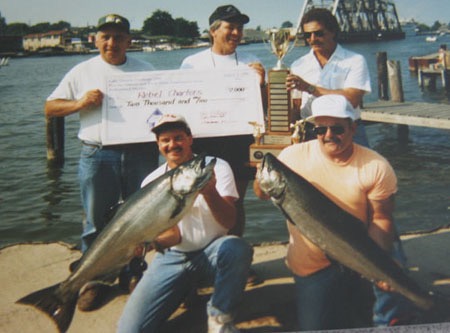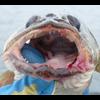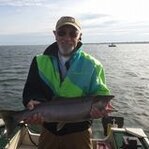-
Posts
1,056 -
Joined
-
Last visited
About RUNNIN REBEL
- Birthday 11/27/1965
Contact Methods
- Website URL
Profile Information
-
Gender
Male
-
Location
Lake Ontario shore line born & raised
-
Interests
Fishing--Hunting--all outdoors--business models
-
Home Port
Bald Eagle Marina Kendall, N.Y.
-
Boat Name
RUNNIN REBEL
Recent Profile Visitors
12,011 profile views
RUNNIN REBEL's Achievements
42
Reputation
-
As of today Tuesday results update. The Canadian great Ontario SALMON derby/Toronto star weekly derby coincides with the USA Loc derby. For the people that know me I apologize ahead of time for pointing this out every single year for the past decades. 🇨🇦 ALL 25 places in Canadian tournament are filled and our LARGER than the 🇺🇸grand prize position on the USA side LOC Derby, which still has not filled all 20 spots yet at #20 pounds minimum. I only point this out because this result ( top 2 salmon places compared )happens +95% of the time for the past decades every year. Jerry. RUNNIN REBEL
- 1 reply
-
- 1
-

-
A shark was discovered on a riverbank in Idaho last week, alarming residents of the landlocked state, wildlife officials said. Calls and emails reporting the unusual discovery on the shores of the Salmon River near Riggins inundated Idaho Fish and Game on August 15, the agency said. Wildlife officials responded to the area and found what appeared to be a salmon shark. The salmon shark, named for its diet of salmon, can grow up to 10 feet long and weigh up to 1,000 pounds, officials said. While the discovery near the freshwater river left officials scratching their heads, the agency assured the public not to be alarmed. A salmon shark was found on the shores of the Salmon River near Riggins, Idaho, on August 15, wildlife officials said. (Idaho Fish and Game) "They don’t live in freshwater. They live in saltwater only," Joe DuPont with Idaho Fish and Game told EastIdahoNews.com. "They don’t exist in Idaho unless they are in an aquarium." The salmon shark is typically found in the Pacific Ocean off the coasts of Washington and Alaska to central Baja California, Mexico, and in the Sea of Japan, according to the Alaska Department of Fish and Game. Fish and Game in Idaho said it is believed someone had dropped the shark off on the riverbank as a prank. The salmon shark does not live in fresh water, and is suspected to have been a prank for a "good laugh," according to Fish and Game. (Idaho Fish and Game) "Seeing no sharks have been observed swimming up our fish ladders lately, and the only known shark that can live in freshwater is the bull shark, we think it is safe to assume that somebody dropped this on the shore for a good laugh," the agency said. "Our Clearwater regional fisheries manager certainly had a good laugh about it." "This would have been a great April Fool's joke," Fish and Game said.
- 1 reply
-
- 1
-

-
If you have any questions or comments. LEX C. BARKER, PMP® | Buffalo District, Corps of Engineers | Project Manager | lex.c.barker@usace.army.mil | Office: (716) 879-4135 | Cell: (716) 342-9379 Jerry RUNNIN REBEL
-
Rochester East Pier (Summerville Pier) repair status. A NEW contract was awarded to place a concrete cap over the repair completed in 2020/2021 due to deficient concrete on initial repair. Please note that there are no structural concerns, but the durability on the deficient concrete is enough of a concern that we chose to place a concrete cap over it to ensure the repair lasts longer. The deficient concrete section is (Summerville Pier closest to the shoreline). Once the concrete cap repair is started, it should be about 10 weeks to completion. Their progress and demobilization/completion (approximately end of August/early September) Jerry RUNNIN REBEL
-
GOVERNOR CUOMO ANNOUNCES PROGRAM TO EXTEND FISHING SEASON AND IMPROVE RENOWNED ANGLING EXPERIENCE IN WESTERN NEW YORK Regulated Water Releases from the Erie Canal into Lake Ontario Tributaries Increases Opportunities for World-Class Fishing Pilot Program as part of the Reimagine the Canals Initiative will Boost Tourism and Businesses in Monroe, Orleans, and Niagara Counties Governor Andrew M. Cuomo today announced the start of a new pilot program, as part of the Reimagine the Canals initiative that uses water from the Erie Canal to enhance already renowned fishing opportunities in Western New York. Originally announced as part of the Governor's State of the State address in January 2020, the program will encourage New Yorkers and visitors to experience the state's Canal system in a different way, while also expanding tourism and bolstering small businesses in the region. "This fall, New York is enhancing some of our world-class fisheries and expanding opportunities for anglers into December by creatively using water from the Erie Canal to bolster fishing conditions and to extend the season," Governor Cuomo said. "As a fisherman, I'm pleased to see our incredible Lake Ontario tributaries will be host to even better experiences for anglers. This innovative use of iconic infrastructure continues our strong tradition of ecotourism while supporting our small businesses." The New York State Canal Corporation is methodically releasing water from the Erie Canal into Lake Ontario tributaries, increasing the water levels and flows in streams and encouraging fish to travel farther upstream, which expands areas for ideal fishing conditions. In addition, the Canal Corporation will extend the annual draining of the canal in Western NY to create a longer season for anglers. This fall, the Canal Corporation increased regulated water releases into Orleans and Monroe County's premium streams-Oak Orchard Creek and Sandy Creek. In early November and early December, all the other Lake Ontario tributaries, Eighteenmile, Johnson, Oak Orchard, Sandy and Salmon Creeks, will see higher flows. This will entice more brown trout, steelhead, and Atlantic and Pacific salmon populations to run up these streams, improving conditions for the fish and expanding opportunities for local and visiting anglers. NYPA President and CEO Gil C. Quiniones said, "This year, the Erie Canal has been a lifeline of economic stimulation across upstate New York. We're proud to launch this program - putting a spotlight on our fishing opportunities and welcoming new anglers into our fishing community-giving New Yorkers one more way to reimagine the canals and take advantage of its water resources." New York State Canal Corporation Director Brian U. Stratton said, "Fishing on the Lake Ontario tributaries was already world-class and well known to experienced anglers. We're proud that our Canal's infrastructure can be used to enhance the fishing experience for New Yorkers and be a catalyst for restarting the economy in Western New York." Department of Environmental Conservation Commissioner Basil Seggos said, "The Reimagine the Canals pilot project will encourage even more New Yorkers to get outside and enjoy our state's natural resources. Water releases will benefit both the fish in these waters and the angling public by providing quality fishing opportunities, bolstering tourism, and supporting local economies." Throughout the length of the program, the Canal and tributary waters will be monitored for quantity and quality to document the success of the pilot. For details and more information, please visit the Canal Corporation's website. This fall, DEC is reminding anglers to be SMART when fishing this year and to be mindful in taking precaution to stop the spread of COVID-19: Socially distance at least six-feet apart; Mask - Wear one when you cannot maintain social distancing, especially in parking lots and along footpaths; Avoid sharing gear when possible; Respect your fellow anglers and the resource by providing space and practicing ethical angling; and Take out what you bring in or place trash in receptacles. This past summer, DEC and the Office of Parks, Recreation and Historic Preservation launched the PLAY SMART * PLAY SAFE * PLAY LOCAL Campaign to encourage all New Yorkers to recreate safely, responsibly, and locally and to always treat fellow outdoor adventurers with respect. The campaign invites people to take the PLAY SMART * PLAY SAFE * PLAY LOCAL pledge, and promise to use common sense to protect themselves and others when enjoying the outdoors. During the State's ongoing response to COVID-19, New Yorkers across the state want and need to get outside for a nature break, which is good for physical and mental health. The campaign and pledge include common sense guidelines for smart and safe recreation, including incorporating social distancing and wearing a face mask, planning trips ahead, choosing a destination close to home because public restrooms and restaurants may not be open, and visiting at off hours. The agencies are also encouraging New Yorkers to take the pledge and use the hashtag #PlaySmartPlaySafePlayLocal when sharing their outdoor adventures on social media. New Yorkers are strongly advised to plan their outdoor adventures ahead of time and choose alternate destinations if their first choice is closed or crowded. Check parks.ny.gov and 511 for park capacity closure alerts and visit the DECinfo locator to find the nearest DEC-managed lands. DEC and State Parks websites also feature guidelines to help New Yorkers safely engage in outdoor activities including swimming, hunting, fishing, boating, golf, and hiking. Indoor spaces and restrooms at State Parks and DEC public facilities may remain closed out of an abundance of caution to prevent community spread of COVID-19, so New Yorkers are encouraged to stay local, within their region, and use the #RecreateLocal hashtag on social media. For more information about how to PLAY SMART * PLAY SAFE * PLAY LOCAL, visit DEC's website.
-

Remembrance for a great friend
RUNNIN REBEL replied to brucehookedup's topic in Open Lake Discussion
-
-
-
-
-
-
-
Place for info: National Sea Grant Law Center. Nsglc.olemiss.edu/covid19/ Though allocated, I don’t know more about dispersal or application than what is online. The organizer of this site (seagrant.noaa.gov/seafood-resources) also said they will post on this as they learn more, but they referenced the same article I found everywhere. This is the response. Its a good start Jerry RUNNIN REBEL Sent from my iPhone using Lake Ontario United
-
I am asking now, will update. Good thing we are not in Michigan applying in that list above ^^^^^^^ ALL ahead of Michigan really ? Puerto Rico $1,000,000 United States Virgin Islands $1,000,000 Federally Recognized Tribes in Alaska $1,000,000 Guam $1,000,000 Commonwealth of the Northern Mariana Islands $1,000,000 Jerry RUNNIN REBEL
-
Commerce Secretary Announces Allocation of $300 Million in CARES Act Funding May 07, 2020 Interstate marine fisheries commissions, Puerto Rico, and U.S. Virgin Islands will disburse funds to address coronavirus-related losses Today, the Secretary of Commerce announced the allocation of $300 million in fisheries assistance funding provided by Sec. 12005 of the Coronavirus Aid, Relief, and Economic Security Act, also called the CARES Act, to states, Tribes, and territories with coastal and marine fishery participants who have been negatively affected by COVID–19. “This relief package will support America’s fishermen and our seafood sector’s recovery,” said U.S. Department of Commerce Secretary Wilbur Ross. “Thank you President Trump, Secretary Mnuchin, and our Congressional leaders of both parties for your work to pass the historic legislation that is bringing much needed relief to America’s fishermen. This Administration stands with the men and women working to provide healthy and safe seafood during this uniquely challenging time, while our U.S. fisheries work to continue to support 1.7 million jobs and to generate $200 billion in annual sales. The nation is grateful to our fishermen for their commitment.” As a next step, NOAA Fisheries will use these allocations (see below) to make awards to our partners—the interstate marine fisheries commissions, Puerto Rico, and the U.S. Virgin Islands—to disburse funds to address direct or indirect fishery-related losses as well as subsistence, cultural, or ceremonial impacts related to COVID-19. “We are going to rely primarily on our partners at the interstate marine fishery commissions during the award process because they have a demonstrated track record of disbursing funds provided to them quickly and effectively,” said Chris Oliver, Assistant Administrator for NOAA Fisheries. The commissions then will work with each state, Tribe, and territory to develop spend plans consistent with the CARES Act and NOAA’s guidance. Puerto Rico and the U.S. Virgin Islands will submit award applications and spend plans to the agency directly. All spend plans must describe the main categories for funding, including direct payments, fishery-related infrastructure, and fishery-related education that address direct and indirect COVID-19 impacts to commercial fishermen, charter businesses, qualified aquaculture operations, subsistence/cultural/ceremonial users, processors, and other fishery-related businesses. Once a spend plan has been approved by NOAA, the agency anticipates that the three Commissions will review applications and process payments to eligible fishery participants on behalf of the states and territories. The states will have the option to process payments themselves. Fishery participants eligible for funding include Tribes, commercial fishing businesses, charter/for-hire fishing businesses, qualified aquaculture operations, processors, and other fishery-related businesses. They should work with their state marine fisheries management agencies, territories, or Tribe to understand the process for applying for these funds. Also of note, for the purposes of Sec. 12005 funding, businesses farther down the supply chain—including vessel repair businesses, restaurants, or seafood retailers—are not considered “fishery-related businesses.” Summary of Allocations* Entity Allocation of Sec. 12005 Funding Alaska $50,000,000 Washington $50,000,000 Massachusetts $28,004,176 Florida $23,636,600 Maine $20,308,513 California $18,350,586 Oregon $15,982,827 Louisiana $14,785,244 New Jersey $11,337,797 Texas $9,237,949 New York $6,750,276 North Carolina $5,460,385 Federally Recognized Tribes on the West Coast $5,097,501 Virginia $4,520,475 Hawaii $4,337,445 Maryland $4,125,118 Pennsylvania $3,368,086 Alabama $3,299,821 Rhode Island $3,294,234 New Hampshire $2,732,492 American Samoa $2,553,194 Georgia $1,921,832 Connecticut $1,835,424 Mississippi $1,534,388 South Carolina $1,525,636 Delaware $1,000,000 Puerto Rico $1,000,000 United States Virgin Islands $1,000,000 Federally Recognized Tribes in Alaska $1,000,000 Guam $1,000,000 Commonwealth of the Northern Mariana Islands $1,000,000 Total $300,000,000 * Final award amounts will be different due to Hollings and other assessments. CARES Act Funding Questions Q. Who should affected fishermen and communities contact about accessing this funding? A. Fishery participants eligible for funding—including Tribes, commercial fishing businesses, charter/for-hire fishing businesses, qualified aquaculture operations, processors, and other fishery-related businesses—should work with their state marine fisheries management agencies, territories, or Tribe to understand the process for applying for these funds. Q. Can eligible fishery participants receive direct payments? A. Direct payments are expressly allowed under Sec. 12005 of the CARES Act. Each Commissions’ grant application must meet the requirements of the CARES Act and reflect the appropriate use of funds and considerations as outlined in the Request for Applications, the Request for Applications letter and the allocation table provided. Q. How long will it take for affected fishermen to get funding from the CARES Act? A. It will vary, however we expect that Sec. 12005 funding will be disbursed more quickly than fishery disaster assistance funds because the CARES Act language does not require the Secretary of Commerce to declare a fishery disaster. The CARES Act also allows the funds to be awarded on a “rolling basis,” which will enable NOAA Fisheries to execute the funds more nimbly in partnership with the states, Tribes, and territories. Q. What types of fishing-related businesses are eligible for assistance? A. For the purposes of carrying out the provisions in Section 12005 of the CARES Act, “fishery-related businesses” should be limited to commercial fishing businesses, charter/for-hire fishing businesses, qualified aquaculture operations, processors, and dealers. Businesses farther down the supply chain—including vessel repair businesses, restaurants, or seafood retailers—are not considered “fishery-related businesses” for the purposes of this funding. NOAA Fisheries generally does not expect bait and tackle operations and gear and vessel suppliers to be eligible for Section 12005 funding. However, individual states, Tribes, and territories will have the discretion to determine how they will identify eligible fishery participants, consistent with the requirements of the CARES Act, in their spend plans. Q. Which Tribes are eligible for assistance? A. The definition of “fishery participant” identified in Sec. 12005 of the CARES Act, includes Tribal fishery participants. So, Tribes in coastal states with marine or anadromous fisheries and/or marine shellfish or finfish aquaculture operations are eligible for Sec. 12005 funds. Tribes in non-coastal states with freshwater fisheries will not be eligible for Sec. 12005 funds. Q. Which types of aquaculture operations are eligible for funding? A. Privately owned aquaculture businesses growing products in state or federal marine waters of the United States and the hatcheries that supply them are eligible for Sec. 12005 funding. This includes all molluscan shellfish and marine algae. Non-salmonid marine finfish grown in marine waters not covered by USDA are also eligible for Sec. 12005 funding. Q. On what basis did the agency make the initial allocation decision? A. Given the definition of “fishery participant” identified in Sec. 12005 of the CARES Act, the agency used readily available total annual revenue information from the commercial fishing, charter fishing, aquaculture, and processor/seafood sectors of coastal states, Tribes, and territories to proportionately allocate Sec. 12005 funding. NOAA Fisheries also took into consideration negative impacts to subsistence, cultural, and ceremonial fisheries during the allocation process. Q. Who will be responsible for determining if fishery losses exceed the 35 percent standard and applying for assistance? A. Given the broad range of fisheries and entities affected across multiple jurisdictions, it will be important to provide states and territories flexibility in determining how they will identify which fishery participants meet the requirements described in Sec. 12005(b)(1)-(2). Thus, each state/Tribe/territory will be required to determine how they will verify which fishery participants meet the threshold of economic revenue losses greater than 35 percent as compared to the prior five year average or negative impacts to subsistence, cultural, or ceremonial fisheries. The spend plans will provide details on their proposed process for making these determinations. Last updated by Office of Communications on May 07, 2020 Jerry RUNNIN REBEL





















